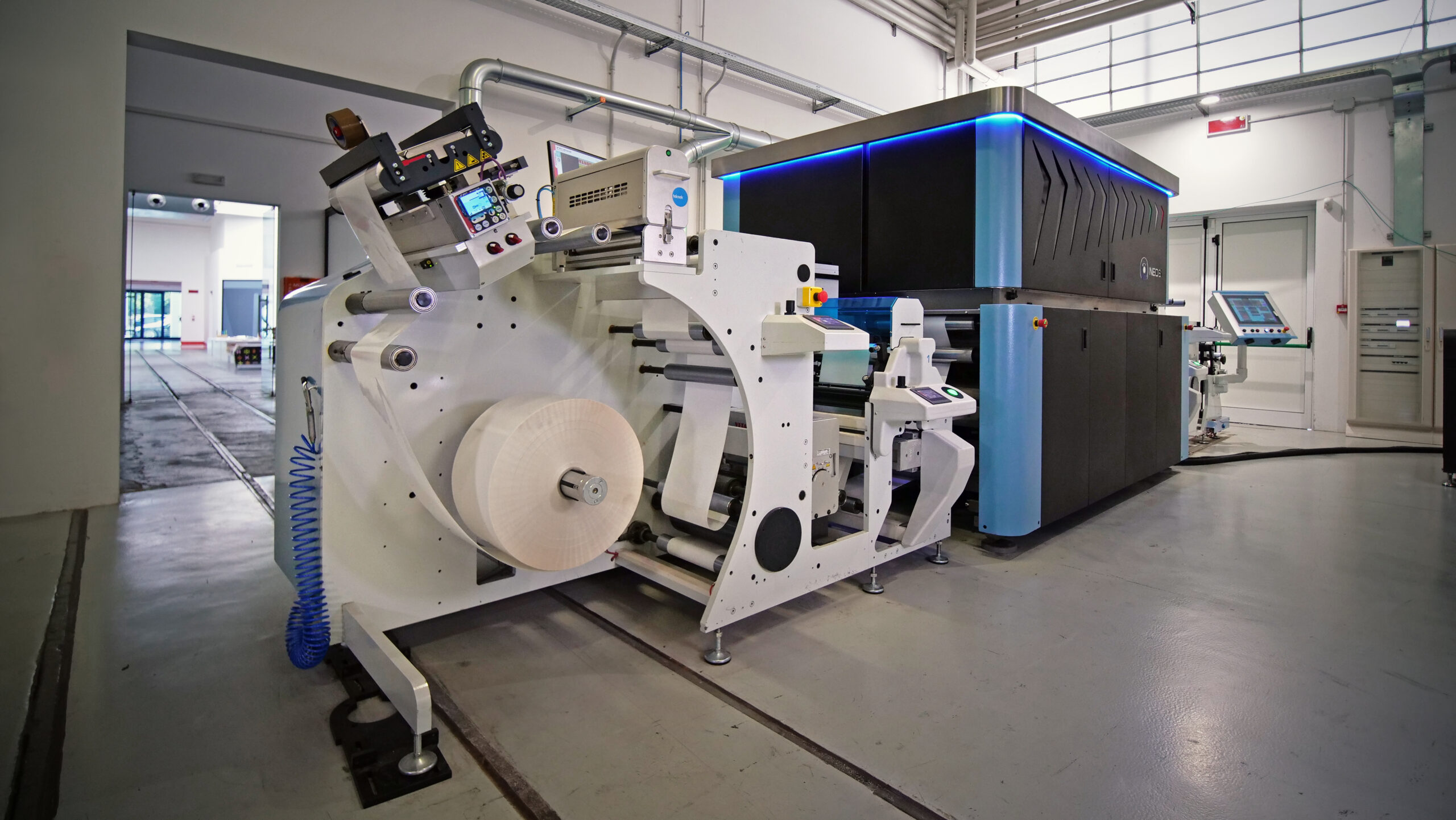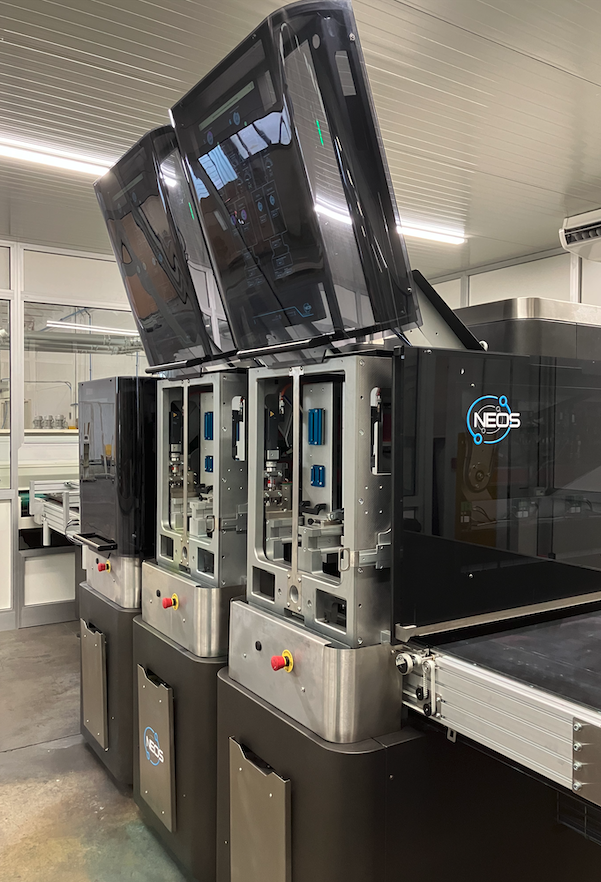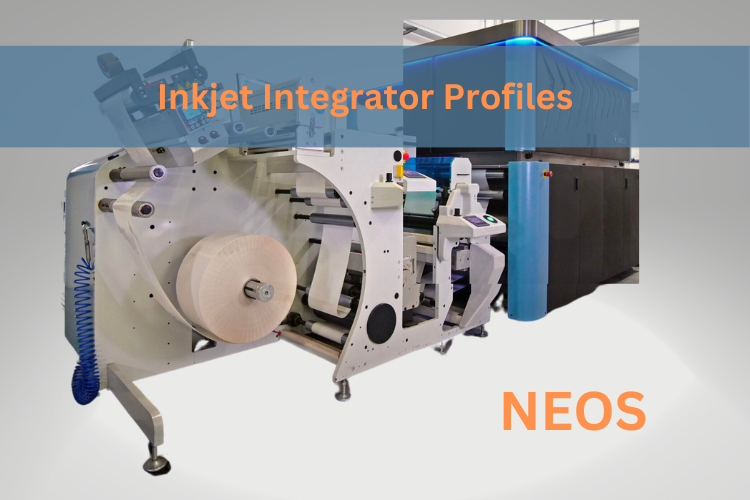In this series of inkjet integrator profiles, Inkjet Insight aims the spotlight on companies focussed on offering custom-developed inkjet printing solutions to their customers. Some of the basic considerations have been laid out in Inkjet Integrators – an introduction and you can follow all of our Bespoke Integration coverage here. We have made this series free for all readers to raise awareness of the players this market and the opportunities inherent in custom development.
To establish a market overview, we are examining the company basics and the typical types of solutions individual providers are offering. Please keep in mind that most companies will happily evaluate solution requirements that are not covered in their core markets and that companies do evolve over time. Our first profile covers Italian integrator, NEOS.
NEOS, the company
The company was founded 2017 in Fiorano Modenese, Northern Italy. The founder Vincenzo Palumbo, having considerable experience in ceramic inkjet printing since 2005, decided to bring custom inkjet technology to other markets with a new company. The company designs and manufactures custom inkjet production print solutions. To accommodate the recent growth, the company just moved to larger premises in the same town, and is now located close to the eponymous Ferrari factory.
From the three founders, the company expanded to more than 50 employees at the start of 2024 and further growth is anticipated. In 2023 the company achieved a revenue of €15 million, with more than €20 million planned for 2024.
Design and manufacturing are all on-site, as is an application centre to which customers and prospects are invited to bring their materials for print trials. In September 2024, this will be complemented by a seminar centre to hold conferences, training and educational sessions by Neos and partner companies.
Applications and markets served
NEOS covers a wide range of 2D-print applications and the company has a philosophy to print on all materials except ceramics. The focus is on high-speed, high-productivity solutions. There are four main application areas served today:
- Décor print on paper laminates or solid boards. This ranges from narrow web edge band printers to full-width (2.25 metre) laminate printers.
- Wallpaper
- Packaging applications, including label, folding carton, flexible packaging, and corrugated. As a distinguishing factor the proposed narrow-web label printer can print at very high speeds (150 m/min).
- Metal print on sheet metal for interior and exterior use
To date, NEOS has installed about 20 systems. Prices range from approximately €500k to €10 million, although installations can be priced outside that range depending on the requirements. Edge band printers in the décor industry lead by the number of installations.
Other markets are served as well, as a recent installation for a high-quality, high-speed coffee-table-book printer shows. With a 240 m/min speed and a 1.4 m print width, the printer demonstrates considerable productivity. Predominantly focused on serving industrial customers, printing companies are among NEOS’ customers as well.

NEOS Fighter module in a typical configuration for label print up to 150 m/min, or décor edge band printing
Technologies and devices
NEOS covers the full range of printer set-ups, ranging from stand-alone printers, to print units integrated into a customer-supplied substrate transport, to integrating inkjet into a full production line. To cover the diverse markets, NEOS developed four printer engine models, which can be configured in various combinations of widths, number of colours, speed, and a wide range of ink chemistry. It includes both web and sheet formats as well as single and multi-pass print engines.
A choice of different inkjet heads from several manufacturers is supported. Most current installs use Ricoh, Konica Minolta or Xaar inkjet heads, while Epson and Fujifilm are supported as well. Heads from additional manufacturers are being evaluated.
Electronics and workflow are core competencies at Neos. The company is able to program the drive electronics and waveforms for the inkjet heads used. Software capabilities include offering its own RIP, although 3rd party RIP solutions can be integrated as well. Interestingly, the company also offers an internally developed camera system for inspection and nozzle adjustment or skew correction for large format sheet-fed printers.

NEOS Bombardier module equipped for CMYK and double white print with LED-UV and printing on solid boards
Inks and substrates
NEOS devices support aqueous and UV inks, which are adapted to each application business case. Quite notably, NEOS has a controlling stake in an Italian ink manufacturer and cannot only design but also manufacture inkjet inks. Accordingly, the company can offer its own inks in addition to 3rd party inks – after testing and qualifying those and adapting the drivers accordingly.
NEOS printers support a wide range of substrates, essentially all but ceramics and fashion textile/garment subtrates.
Sales, service and geographic coverage
The systems are mostly sold directly by NEOS, although in some countries dealers are employed as well. Accordingly, most service is performed directly by NEOS, although some local service partners are used in certain regions.
So far NEOS has served the European market, including Turkey. The first installations in the US are set to follow this year. Depending on demand, NEOS is looking at further geographies.
What is setting NEOS apart?
The company was founded by several expert inkjet technologists to solely operate as an inkjet integrator. There are no legacy technologies and customers to serve and the company is focussed exclusively on state-of-the art, customised inkjet solutions. Developing innovative and tailored solutions is enabled by strong engineering and application specialist teams to develop application-specific solutions.
NEOS is also striking a balance between pre-configured printer modules and creating flexible, customised solutions based on these modules. The preconfigured parts cut down the development time and costs.

